Are you planning a vacation to Malta and you’re wondering if Valletta is worth your time? Having visited this tiny capital city myself, I’m here to give you a few tips.
During my trip, I spent four days in Malta and used Valletta as my home base so I was able to see the pros as well as the cons of visiting the city. Therefore, in this post, I’ll list both for you to make an informed decision on whether it’s worth including in your own travel plans.
Is Valletta worth visiting? (Short answer)
Valletta, though small in size, is packed with history, beautiful architecture, and cultural experiences. Among the main attractions, you can find the Upper and Lower Barrakka Gardens, St. John Co-Cathedral, and the Grand Master’s Palace. The city is also really walkable and a great destination in spring due to its warmer climate.
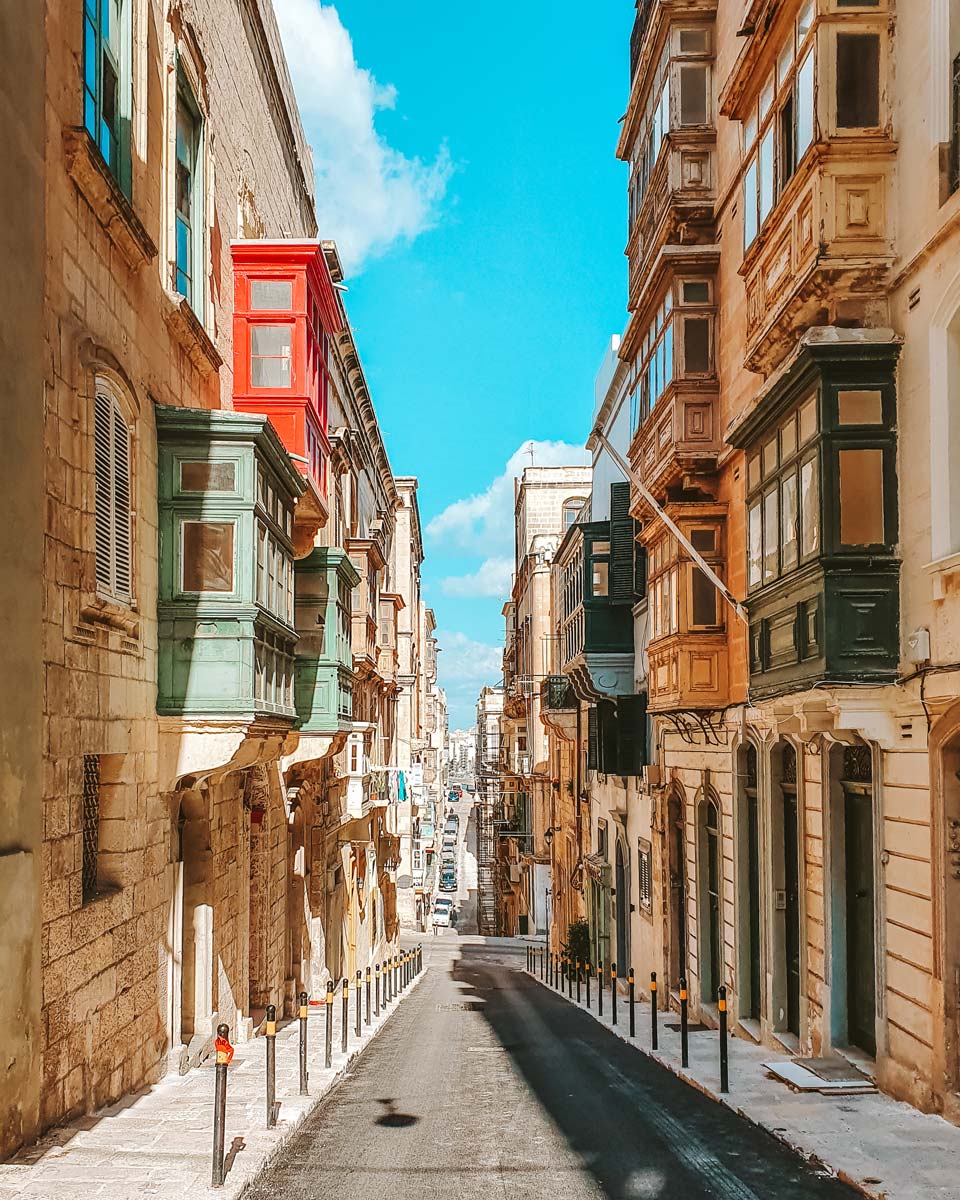
Reasons why you should visit Valletta, Malta
01. It’s a very walkable city
One of the things I loved most about Valletta was just how walkable it is. Thanks to its compact size, you can comfortably explore the entire city on foot.
The streets are laid out in a grid system, making it a breeze to find your way around. And the best part? Every walk is a chance to stumble upon a new photo-worthy spot, whether it’s a cute café, a picturesque square, or a stunning view of the Mediterranean Sea.
02. Amazing architecture
A trip to Valletta is like stepping back in time. The city (a UNESCO World Heritage Site) is a living, breathing testament to Malta’s rich history.
And nowhere is this more evident than in its remarkable architecture, from the imposing ramparts guarding the city’s entrance to the detailed facades of its palazzos.
Its buildings, ranging from grandiose baroque landmarks to humble historic houses, display a blend of styles reflecting the different eras and cultures that have shaped the city.
03. Great spring destination
If you’re looking for a great spring destination in Europe, then Valletta should be high on your list. Unlike some parts of Europe that are still shaking off the chill of winter, Malta already basks in pleasantly warm temperatures at the beginning of March.
Additionally, the island sees fewer tourists in spring than during the summer months, which is also a big plus.
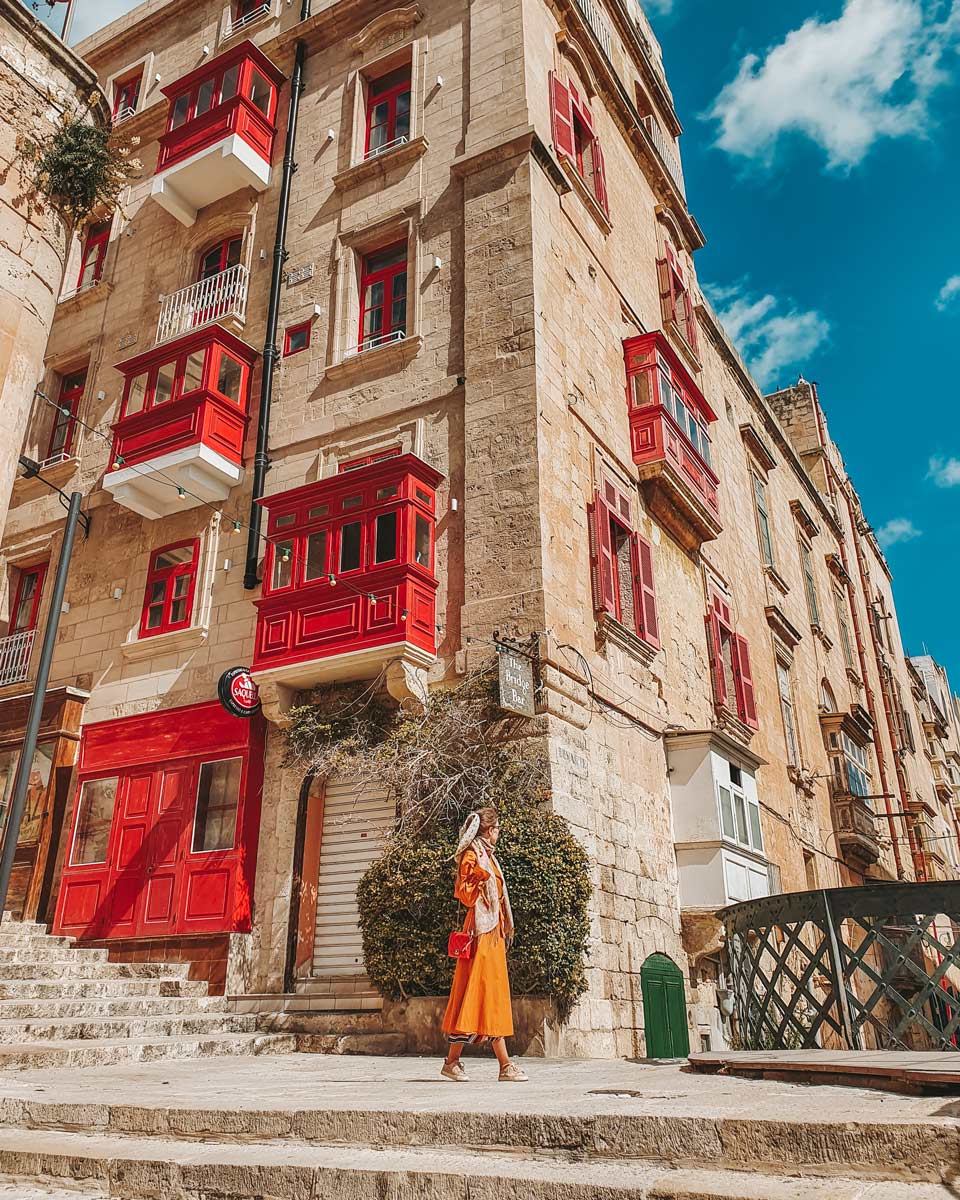
04. Colorful wooden balconies
One of the most distinctive and charming features of Valletta’s cityscape is its enclosed wooden balconies, known as gallariji.
Painted in many different shades, from dark blues and greens to bright yellows and reds, they are not just functional, but also add an aesthetic touch to the city’s stone buildings. So make sure to look up and appreciate these cheerful splashes of color as you walk down Valletta’s streets.
TIP: One of the most Instagrammable spots in Malta is the building with red balconies, located right above Victoria Gate. You’ll find it marked “Red Phone Booth and Balconies” on Google Maps.
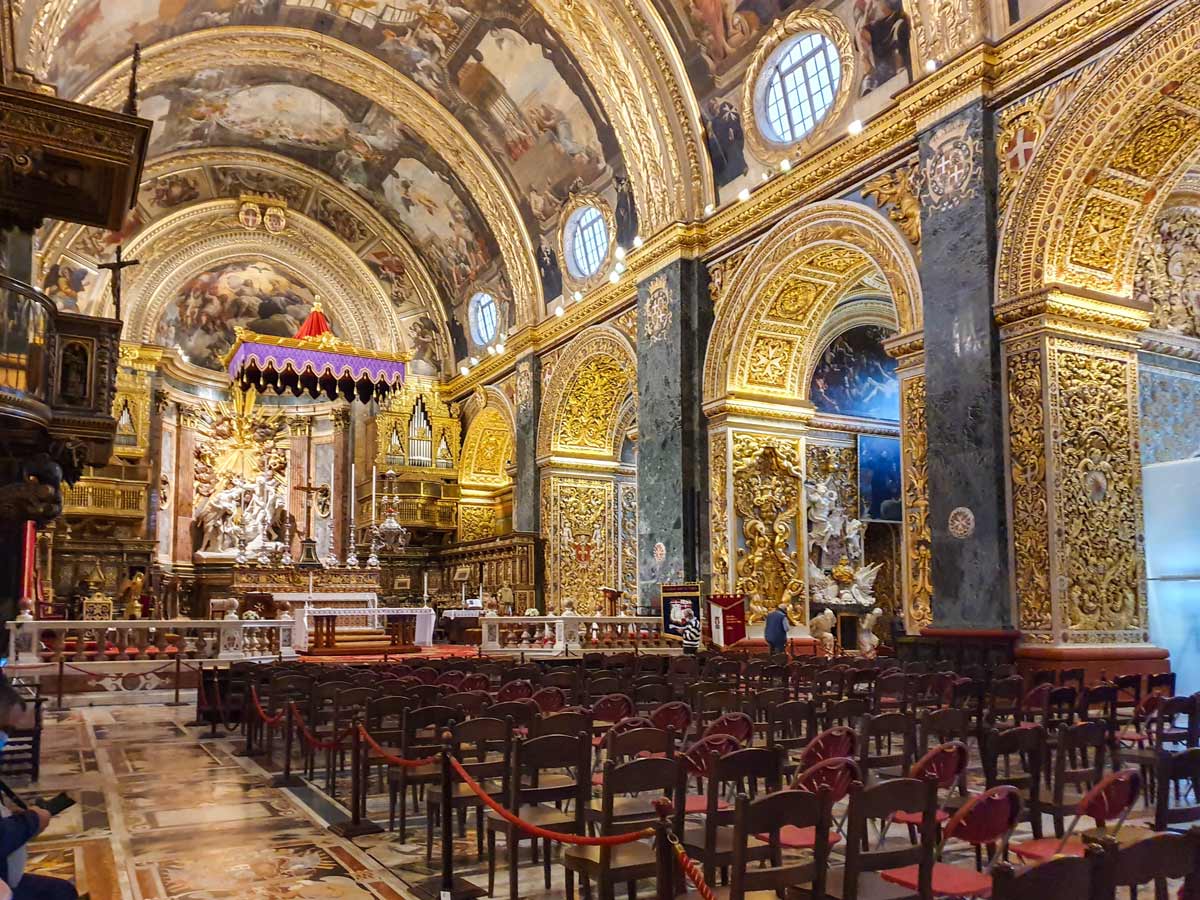
05. St. John’s Co-Cathedral
Even though the entry fee to St. John’s Co-Cathedral is kind of on the expensive side, I still suggest you add it to your itinerary.
From the outside, this 16th-century cathedral may seem austere compared to other baroque buildings in Valletta. But don’t let that fool you. Step inside, and you’re greeted by an extravagant display of baroque art and architecture.
The cathedral is adorned with intricate carvings, golden ornamentation, and several works of art, including Caravaggio’s largest painting, “The Beheading of Saint John the Baptist”.
06. Grand Master’s Palace
The Grand Master’s Palace, an imposing structure in the city center, is another reason why you’ll want to visit Valletta. Built between the 16th and 18th centuries as the residence of the Grand Master of the Knights of St. John, the palace now houses the President’s office.
But don’t just admire it from the outside; the interior, which is open to the public, is equally impressive with its richly decorated staterooms and armory, exhibiting one of the world’s largest collections of weapons and armor.
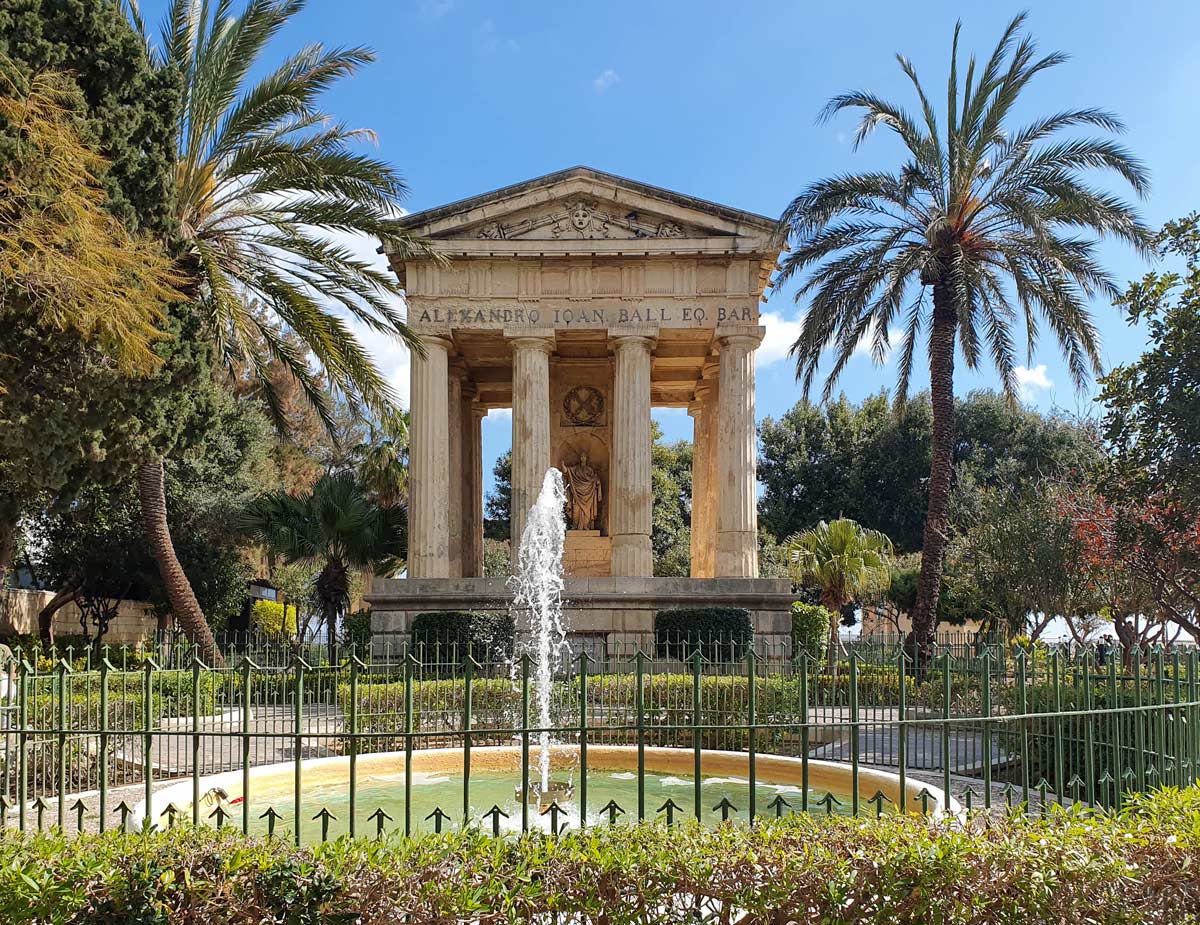
07. Upper and Lower Barakka Gardens
The Upper and Lower Barakka Gardens are two public gardens offering a green escape from the city’s hustle and bustle. The sense of tranquillity, combined with stunning vistas, make these gardens not only a must-visit but also two of the best free things to do in Valletta.
The Upper Barakka Gardens are perched on the city walls and provide panoramic views of the Grand Harbour and the Three Cities. It’s the perfect spot to rest your legs for a bit after a day of sightseeing.
The Lower Barakka Gardens, although smaller, offer their own unique charm and views of the breakwater and the Siege Bell War Memorial.
08. Firing of the cannons
One of Valletta’s most unique attractions is the firing of the cannons which happens on the Saluting Battery, located just below the Upper Barrakka Gardens.
Historically used by ships to calibrate their maritime chronographs, this tradition is now maintained by the Malta Heritage Trust. The cannons are fired every day, Monday to Saturday, at noon and 4 pm.
For a small donation/fee, you can head down to the terrace of the Saluting Battery for an up-close experience of the firing, complete with insightful information about this tradition and the mechanics of the cannons.
However, if you ask me, the view from the Upper Barrakka Gardens offers a more panoramic perspective, and you can still hear the cannons loud and clear from there! Plus, you can always choose to donate even if you don’t go down to the terrace.
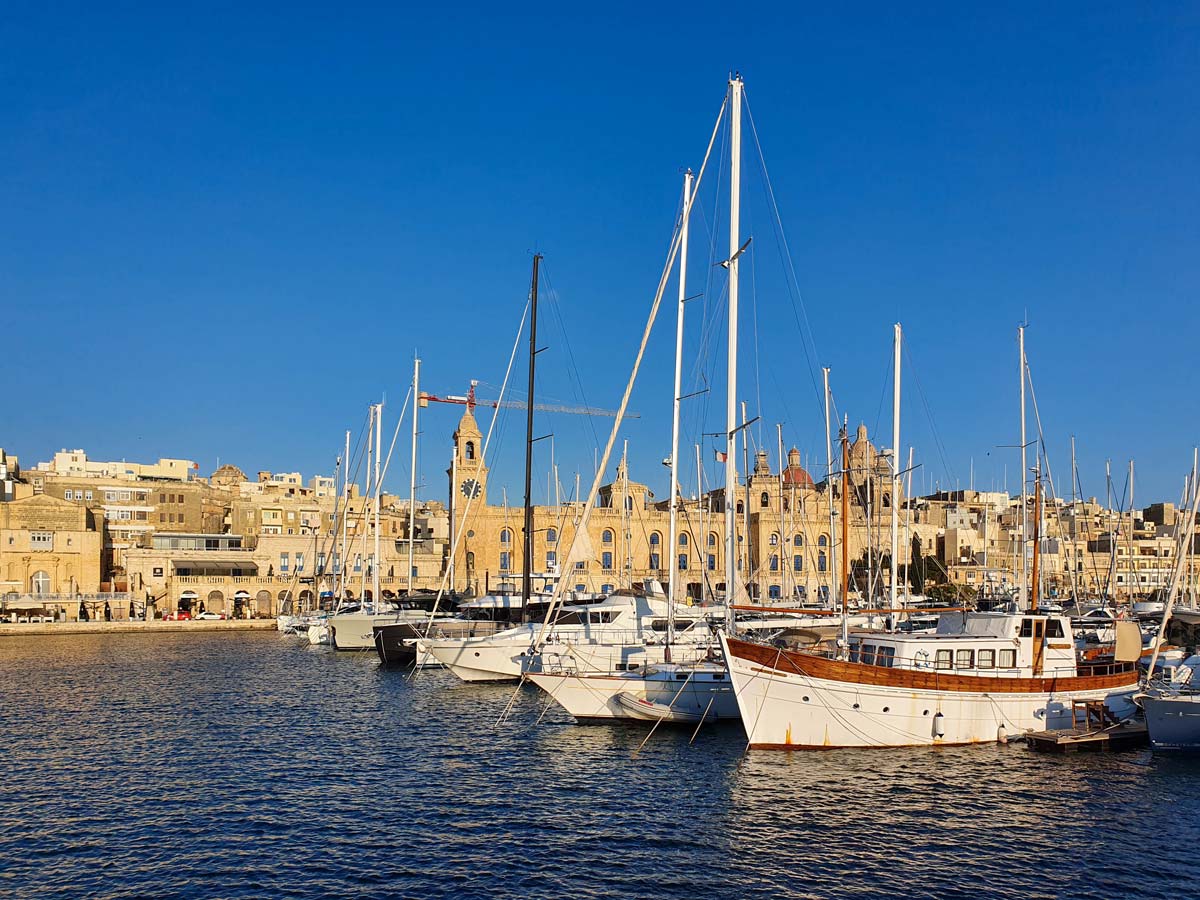
09. The three cities
Another good reason to visit Valletta is its proximity to what is often referred to as the “Three Cities”: Vittoriosa (Birgu), Senglea (Isla), and Cospicua (Bormla).
These cities, older than Malta’s capital itself, offer a less touristy and more authentic peek into Maltese life. Here you can wander through narrow winding streets, gaze at the grand fortifications, and enjoy great views of Valletta.
The most convenient way to visit the cities is by taking a boat trip or the ferry across the bay. To get to the waterfront, I suggest you take the Barrakka Lift down as it will save you time and effort. You can find it inside the Upper Barrakka Gardens and it costs 1 EUR per ride.
10. Bus gateway
Finally, let’s not forget the practicality factor. Valletta serves as Malta’s primary bus gateway, making it a great base for exploring the rest of the island if you don’t plan to rent a car (by the way, they drive on the left side of the road there).
The main bus terminal is located just outside the city gate and you can catch a ride to pretty much anywhere in Malta from here.
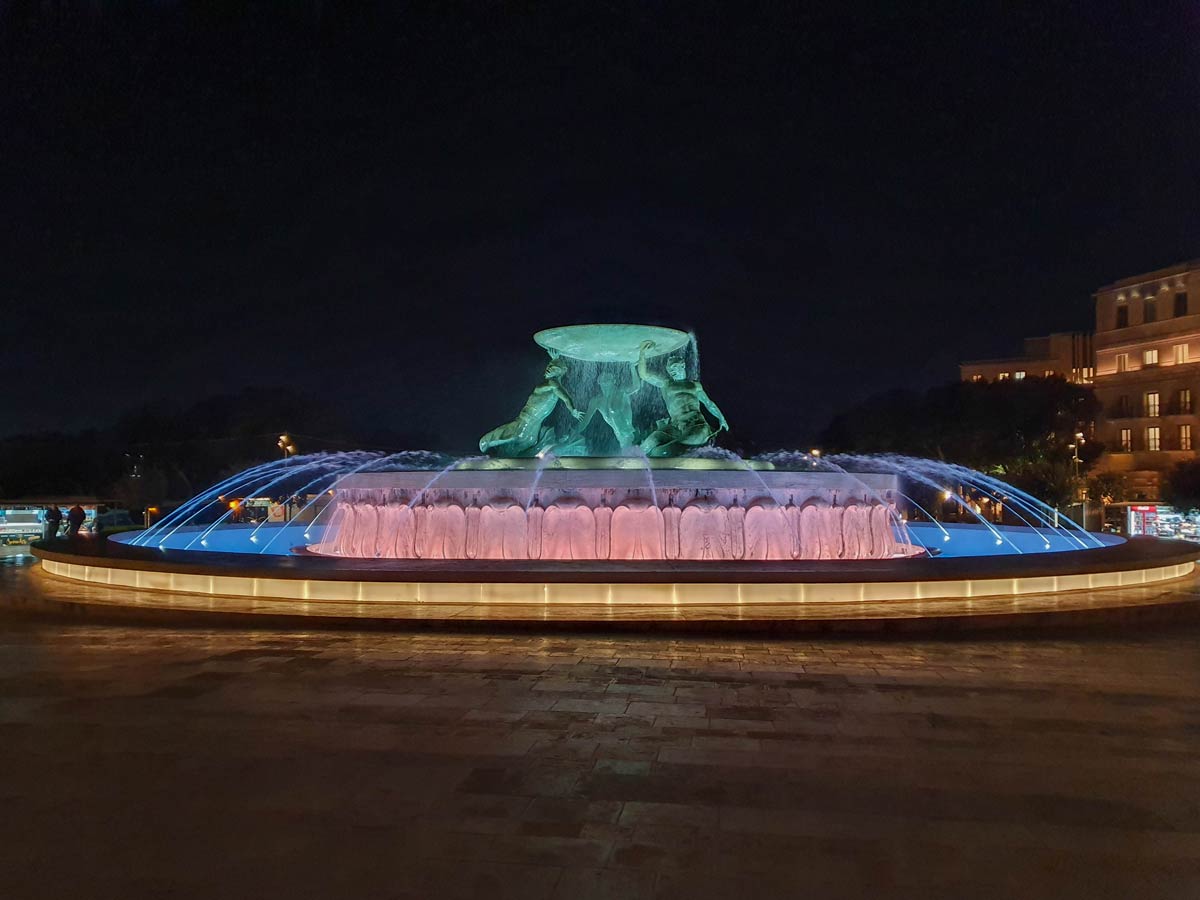
Reasons why you might opt out of visiting Valletta
01. It’s really small
While many people find Valletta’s compact size a plus, it might be a big deterrent for others. Yes, you can walk across the entire city in less than 20 minutes, and yes, it’s really easy to navigate, but that also means there’s a limit to the number of attractions and activities available.
So if you’re looking for a destination with a broad array of experiences or you simply prefer large, sprawling cities, Valletta’s small size might leave you wanting more.
02. It’s more expensive than other locations in Malta
Another aspect to consider is cost. Given its status as the country’s capital, a UNESCO World Heritage Site, and its limited space, Valletta tends to be more expensive than other parts of the island.
This applies to everything from accommodations and dining to shopping and entertainment. While there are budget-friendly options available, they might not be as plentiful or as convenient as in other locations.
Therefore, if you’re traveling on a strict budget, it’s worth considering that your money might not stretch as far in Valletta as it could elsewhere.
So is Valletta worth visiting?!
Its rich history, distinctive architecture, and the charm of being one of Europe’s smallest capital cities make Valletta a great travel destination. However, as with any location, whether it’s the perfect choice for you depends on your personal preferences.
If you’re still undecided or curious to learn more about what the rest of Malta offers, I invite you to also read my post on all the reasons why Malta is worth visiting.
Happy travels~
YOU MIGHT ALSO LIKE
